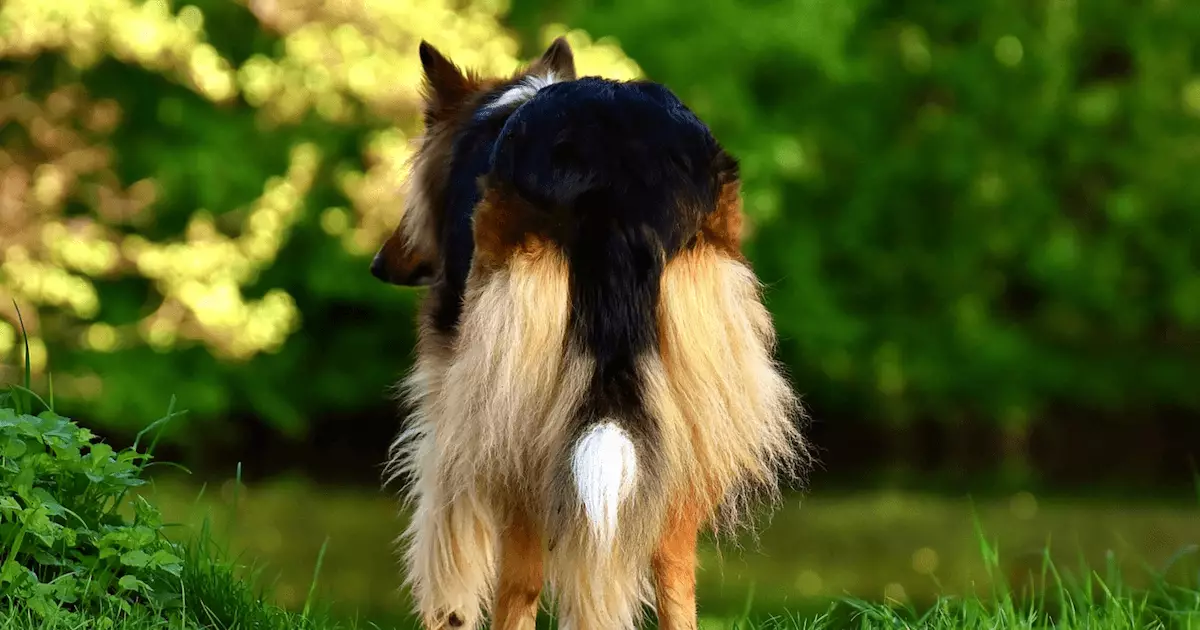When you think about the enchanting presence of long-haired dogs, their flowing coats might evoke images of playful snuggles and idyllic walks. However, as any long-haired dog owner knows, this beauty is accompanied by its own set of challenges. While the allure of silky fur can be irresistible, the practicalities of managing a long-haired pup’s hygiene can lead to more than a few headaches. One particularly vexing issue is the so-called “poop butt,” a situation that demands not only diligence but also a skillful approach to grooming and care.
The Allure of Long-Haired Companions
Long-haired dogs like the Shih Tzu, Afghan Hound, and Yorkshire Terrier captivate dog lovers with their impressive coats. These dogs bring happiness through their playful demeanor and undeniable charm. Unlike their short-haired counterparts, many long-haired breeds are designed to retain warmth, making them perfect companions in cooler weather. Additionally, while some may believe that longer fur leads to more shedding, many long-haired breeds tend to shed less compared to those with shorter coats. This makes them appealing for individuals who might be sensitive to allergies or want to deal with fewer tufts of fur around the house.
Yet, the flip side of this delightful experience cannot be ignored. The intricacies of maintaining a long coat require commitment and rigorous grooming schedules. Thus, it quickly becomes evident that while the long-haired dog might represent warmth and companionship, they also demand constant vigilance in cleanliness.
Tackling the “Poop Butt” Dilemma
For those whose long-haired pups have experienced the embarrassment of fecal matting, the struggle is far too real. “Poop butt,” scientifically known as pseudocoprostasis, occurs when loose stool becomes entangled in a dog’s coat. What may seem like a simple inconvenience can quickly escalate into a serious health issue if not addressed in time.
The incidence of fecal material building up in a dog’s coat can lead not only to unsightly mess but to potential blockage around the anal area, which can be distressing for both the pup and the owner. Early detection and intervention are critical for avoiding secondary issues like vomiting, loss of appetite, or even painful skin conditions resulting from prolonged contact with waste.
This raises an essential question: should you wipe your dog’s bottom? The simple answer is yes. Regularly checking your pup’s rear and cleaning it can prevent potential escalations. For owners who find themselves hesitant about this task, remember that addressing the issue of hygiene is a responsible part of pet ownership and contributes to overall canine health.
The Importance of Grooming and Diet
Proper grooming is instrumental in preventing “poop butt.” Professional groomers stress the need for adequate sanitary trims around sensitive areas such as the anus and under the tail. These trims, often referred to as “potty patches,” can significantly reduce the likelihood of feces attaching to fur. While many dog parents may opt for at-home grooming attempts, consulting a professional is advisable, especially for those unfamiliar with grooming techniques.
Additionally, diet plays a crucial role in maintaining a healthy digestive system for your long-haired dog. A well-balanced diet rich in fiber can aid in forming firmer stools, and when supplemented with probiotics, it works wonders in promoting gastrointestinal health. Every dog has unique dietary requirements based on their breed, age, and activity level, and tailoring a nutritional plan can make a substantial difference in their overall well-being.
Minimizing Messes with Care and Cleaning Tips
There’s no way around it—at some point, even the most diligent dog owners will find themselves faced with a mess. In such moments, acting promptly is key. Cleaning up while the stool is still soft and pliable can simplify the process, making it easier to remove from your dog’s coat. Tools such as moist grooming wipes can be particularly effective for this task, providing a gentle and effective means to clean sensitive areas while also deodorizing.
Waterless shampoos are highly recommended for the in-between moments when a full bath just isn’t feasible. They enable pet owners to maintain a clean and fresh coat without the stress of excessive bathing, which can strip a dog’s coat of essential natural oils and leave it looking dull and lifeless. Implementing a consistent grooming routine paired with these cleaning strategies will drastically improve your long-haired dog’s hygiene and overall health.
In the beautiful world of long-haired dog ownership, a little extra care leads to immense joy and bonding. Embracing these challenges with love and ingenuity ensures that both you and your furry friend enjoy life together, hairball-free and flourishing.

